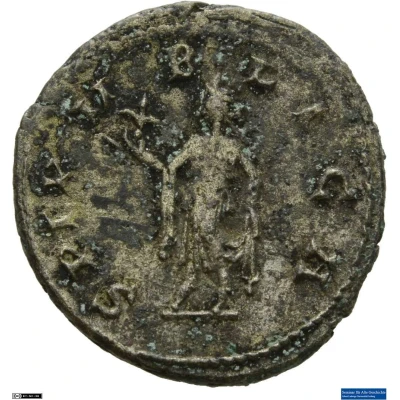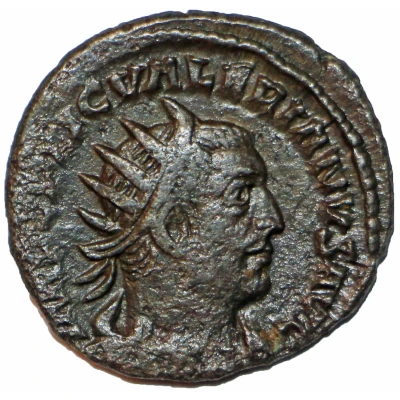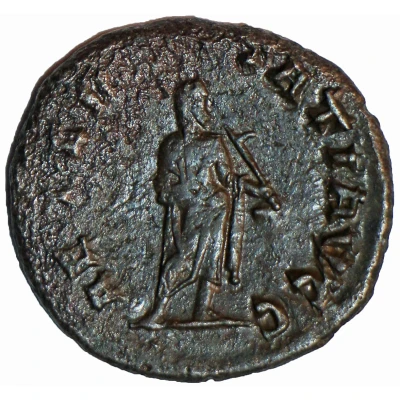Antoninianus - Valerianus AEQVITAS AVGG; Aequitas
| Silver | 3.8 g | - |
| Issuer | Rome › Roman Empire (27 BC - 395 AD) |
|---|---|
| Emperor | Valerian (Publius Licinius Valerianus) (253-260) Gallienus (Publius Licinius Egnatius Gallienus) (253-268) |
| Type | Standard circulation coin |
| Years | 254-255 |
| Value | Antoninianus (1) |
| Currency | Antoninianus, Reform of Caracalla (AD 215 – 301) |
| Composition | Silver |
| Weight | 3.8 g |
| Shape | Round (irregular) |
| Technique | Hammered |
| Demonetized | Yes |
| Updated | 2024-10-05 |
| Numista | N#286114 |
|---|---|
| Rarity index | 100% |
Reverse
Aequitas, draped, standing left, holding scales in right hand and cornucopiae in left hand.
Script: Latin
Lettering: AEQVITAS AVGG
Translation:
Aequitas Duorum Augustorum.
Equity of the two emperors.
Comment
Source:Online Coins of the Roman Empire (OCRE)
Interesting fact
The Antoninianus coin was issued during the reign of Valerianus, who was Roman Emperor from 253 to 260 AD. During his reign, the Roman Empire faced numerous challenges, including invasions by barbarian tribes and economic instability. Despite these challenges, the Antoninianus coin remained a popular form of currency and was widely used throughout the empire. It's interesting to note that the coin's design features the image of Aequitas, the Roman goddess of justice and equality. This suggests that the coin was intended to promote the idea of fairness and equality, which was an important value in Roman society at the time. Overall, the Antoninianus coin is a fascinating piece of history that provides insight into the economic, social, and political conditions of the Roman Empire during the 3rd century AD.



